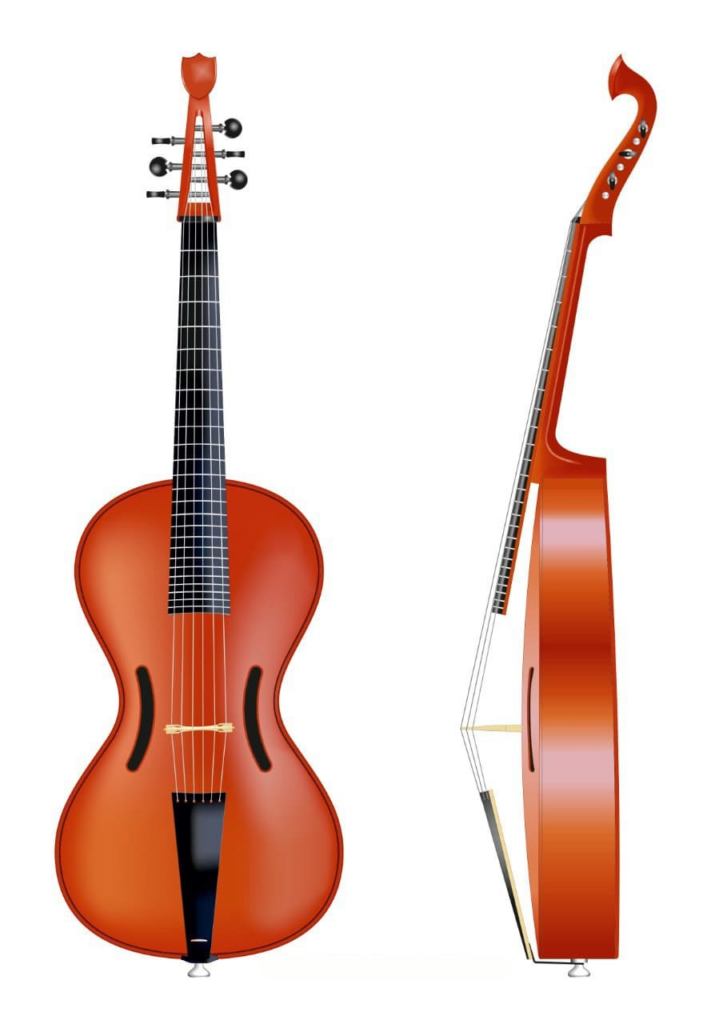200 years ago…
 The first Arpeggione was created in 1823 by Johann Stauffer, an Austrian luthier and a true innovator of his time, for the guitar virtuoso Vincent Schuster.
The first Arpeggione was created in 1823 by Johann Stauffer, an Austrian luthier and a true innovator of his time, for the guitar virtuoso Vincent Schuster.
The great composer Franz Schubert was so enamored of the instrument that he wrote a sonata for it – he named it the Arpeggione Sonata. After a period of mass popularity, the instrument was largely forgotten. In our days, interest in the Arpeggione is reawakening, and I am proud to be one of the leaders of this revival.
The uniqueness of this instrument is that it can be played as a guitar, using all known techniques. It can also be played with a bow, like a cello.
And now…
Arpeggione instrument by Pavel Goldberg on Sketchfab
Specifications:
Dimensions
Total length: 48″ 21/64 – 1227.5 mm.
Body length: 25″ – 637 mm.
Upper width: 12″ 7/8 – 327.5 mm.
Middle width: 8″ 39/128 – 211 mm.
Lower width: 15″ – 381 mm.
Rib height: 5″ 25/64 – 137 mm
Side width: 4″ 21/64 – 110 mm
Scale length: 26″ 25/32 in – 680 mm.
Nut width: 2″ – 50 mm.
Strings spacing on fridge: 3 35/64 – 90 mm
Materials
Body sides and back: Maple/Mahogany/Rosewood
Body top: European spruce AAA – grade
Bridge: Maple
Neck: Maple
Frets: Neusilber
Finishing: Natural wax
Strings: D’Addario Flat Tops for acoustic guitar

